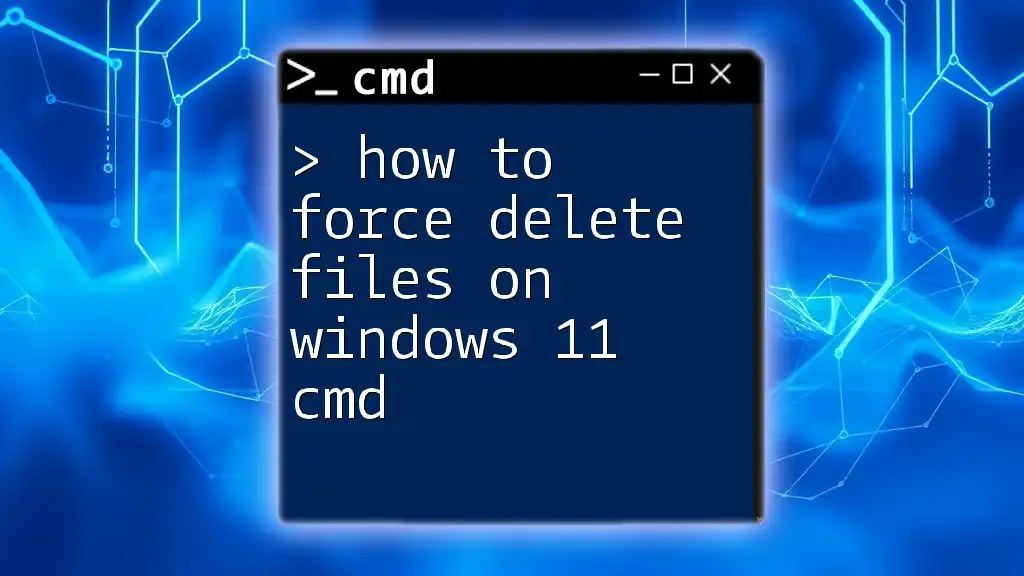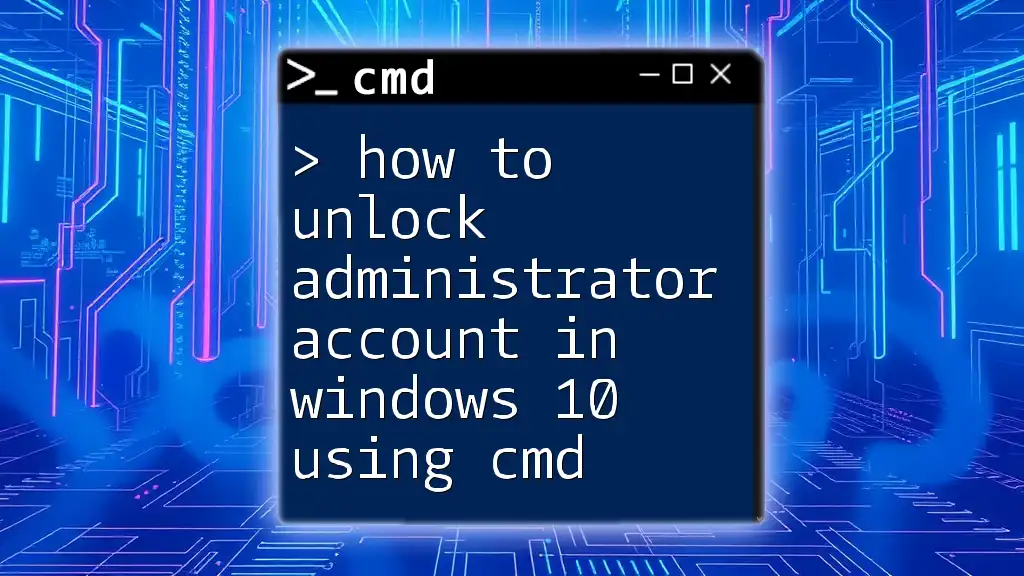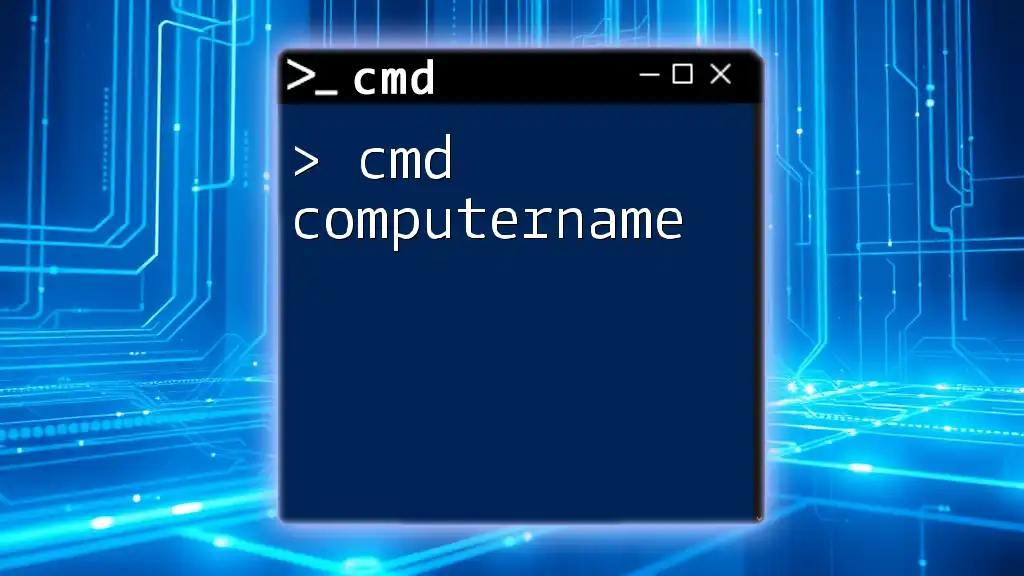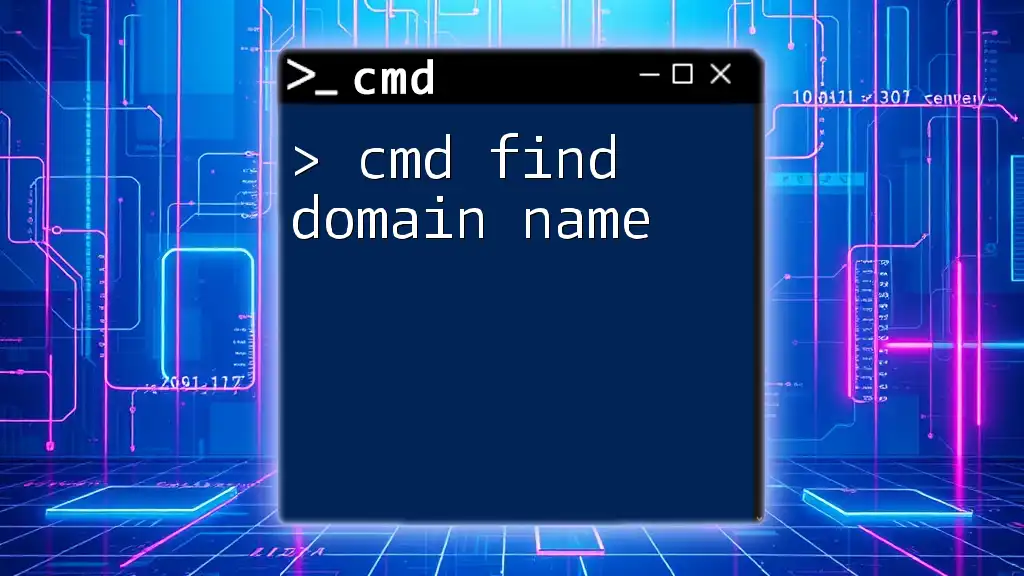To find your computer's domain name using the Command Prompt in Windows 10, you can use the following command:
systeminfo | findstr /B /C:"Domain"
Understanding CMD (Command Prompt)
What is CMD?
The Command Prompt, commonly referred to as CMD, is a command-line interpreter on Windows operating systems. It allows users to execute commands to perform various tasks directly, bypassing the graphical user interface (GUI). CMD is particularly helpful for advanced users and IT professionals who prefer a more efficient way to interact with the system.
Why Use CMD to Find Domain Name?
Utilizing CMD for tasks such as finding your computer's domain name has several advantages:
- Speed: Commands can often deliver results faster than navigating through multiple GUI menus.
- Efficiency: For users familiar with commands, it's a straightforward way to access relevant information.
- Flexibility: CMD allows for additional commands that provide more detailed outputs, if needed, which can be invaluable for troubleshooting.
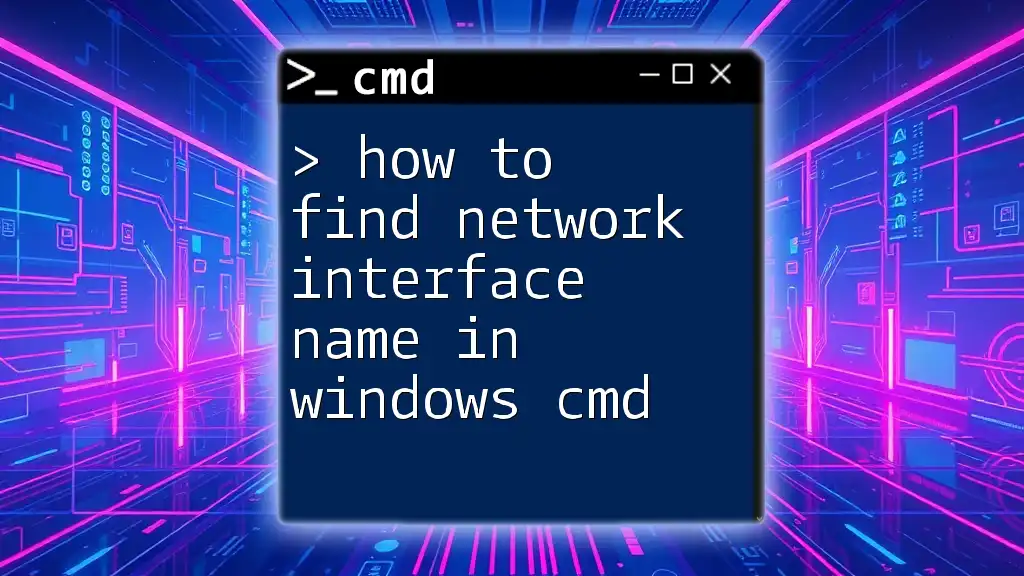
Preparing to Use CMD
Opening Command Prompt
To get started, you need to open Command Prompt. There are multiple methods to do this:
- Using the Run dialog: Press `Win + R`, type `cmd`, and hit `Enter`.
- From the Start Menu: Click on the Start button, type `cmd` or `Command Prompt`, and select it from the results.
Each of these methods will lead you to the Command Prompt window where you can input your commands.

Checking the Computer's Domain Name
Using the `echo` Command
The `echo` command is a simple yet effective way to check your domain name.
Command Explanation
The `echo` command can return specific environment variables, one of which is `%USERDOMAIN%`. This variable represents the domain name of the currently logged-in user.
Example Code Snippet
echo %USERDOMAIN%
When you run this command, the output will display your computer's domain name. If you're not part of a domain, it will return the name of your computer instead.
Using the `hostname` Command
Another straightforward command to find your domain name is `hostname`.
Command Explanation
This command returns the name of your computer, which may include the domain if it is part of one.
Example Code Snippet
hostname
Upon execution, this command will display the full hostname. If your computer is part of a domain, the domain name will typically be part of this output. If not, it will just show the local computer name.
Using the `set` Command
The `set` command is a more comprehensive way to view your user variables, including the domain.
Command Explanation
This command displays a list of all the environment variables in the CMD session, amongst which `USERDOMAIN` is located.
Example Code Snippet
set USERDOMAIN
Executing this will echo the domain name associated with your user account. The output is similar to the previous commands but allows for verification alongside other environment variables.
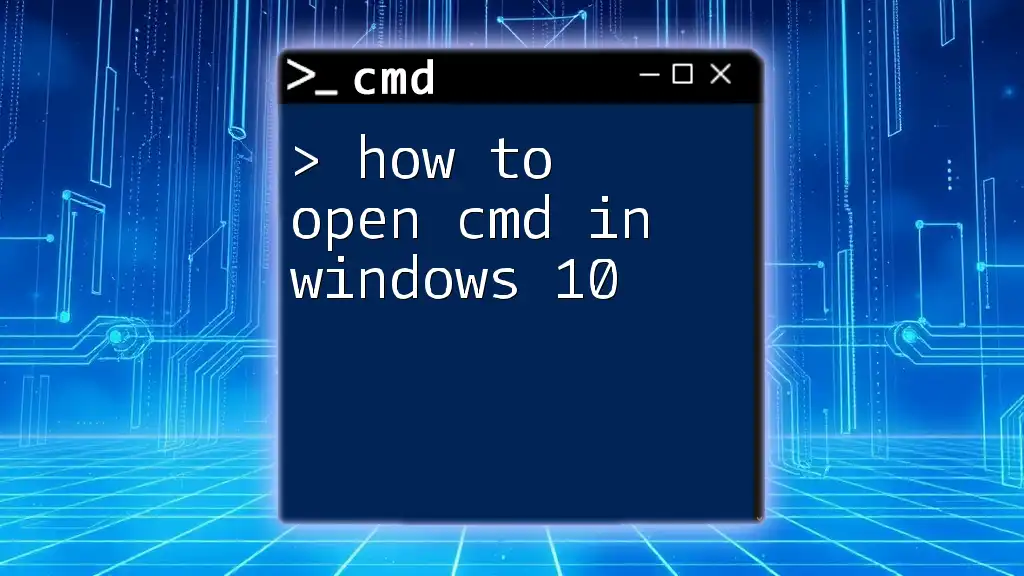
Additional Methods to Find Domain Name
Using the `ipconfig` Command
The `ipconfig` command is typically used for network configuration and provides insight into your network settings.
Command Explanation
The command provides details about your network interfaces along with the DNS settings, which can include domain information.
Example Code Snippet
ipconfig /all
Once you run this command, you'll see detailed information regarding the network interfaces. Look for the entries labeled "Connection-specific DNS Suffix" and "Primary Dns Suffix." This can give you critical data regarding the network domain.
Network Settings
Accessing Network Properties via CMD
Another method to obtain domain information is through your network configuration with the `net` command.
Example Code Snippet
net config workstation
This command provides various details about your computer's network connection including the domain if it is a joined machine. Look specifically for the "Workstation domain" in the output, which specifies the domain name.
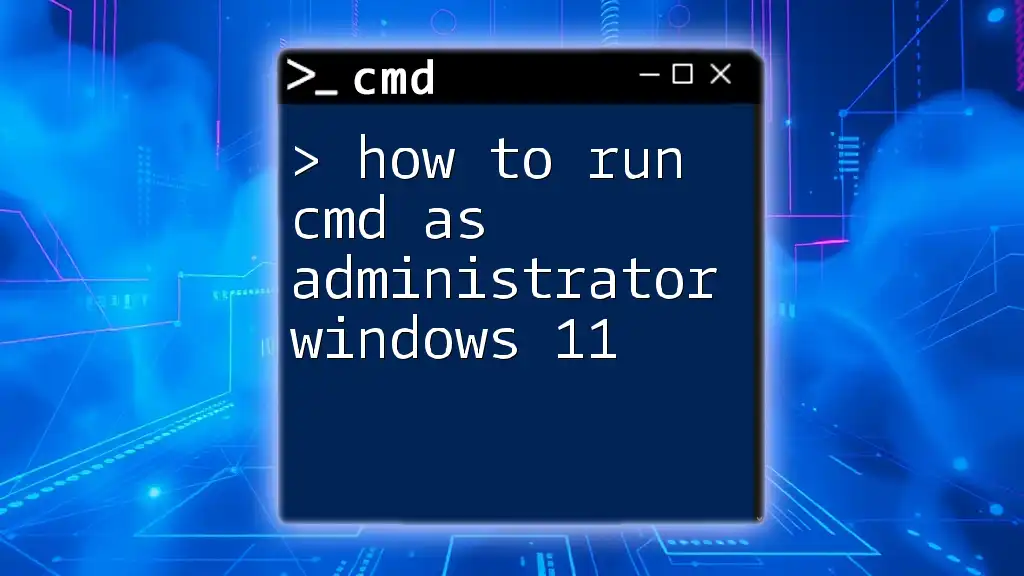
Troubleshooting Common Issues
CMD Not Recognizing Commands
Sometimes, CMD may not recognize the commands you enter. This can occur for several reasons:
- Typographical errors: Ensure your commands are spelled correctly.
- Permissions issues: Running CMD as an administrator may be necessary for certain commands.
Getting an Error Message
If you encounter error messages, here are a few common ones:
- "Access denied": This could happen if you lack the necessary permissions. Try running CMD as an administrator.
- "Command not found": This usually indicates that either the command was mistyped, or system files are corrupted. Double-check the command syntax and ensure that your system is working correctly.
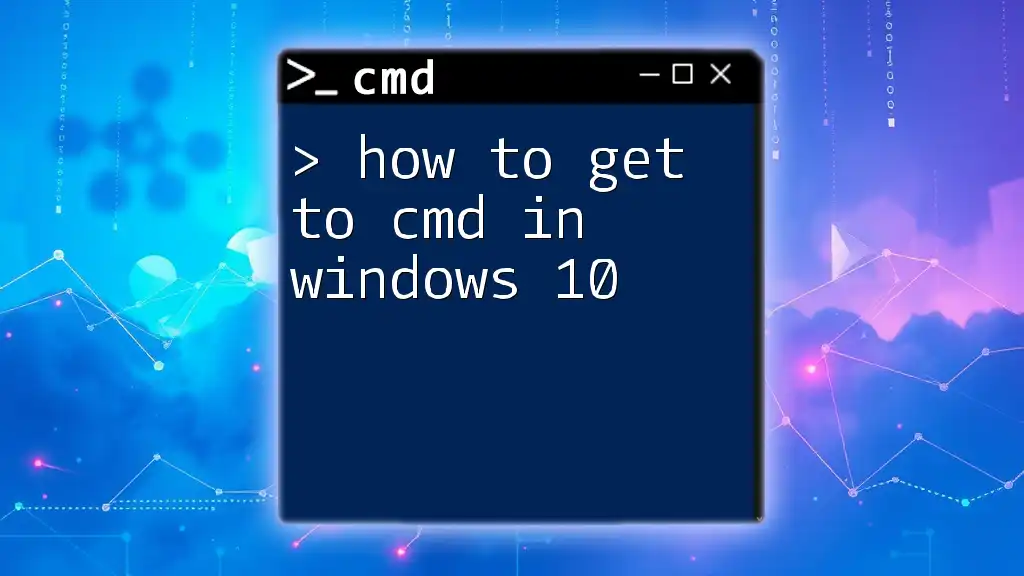
Conclusion
Knowing how to find your computer's domain name using CMD on Windows 10 not only enhances your networking knowledge but also empowers you to troubleshoot issues effectively. Mastering CMD commands can significantly improve your efficiency and understanding of your system.
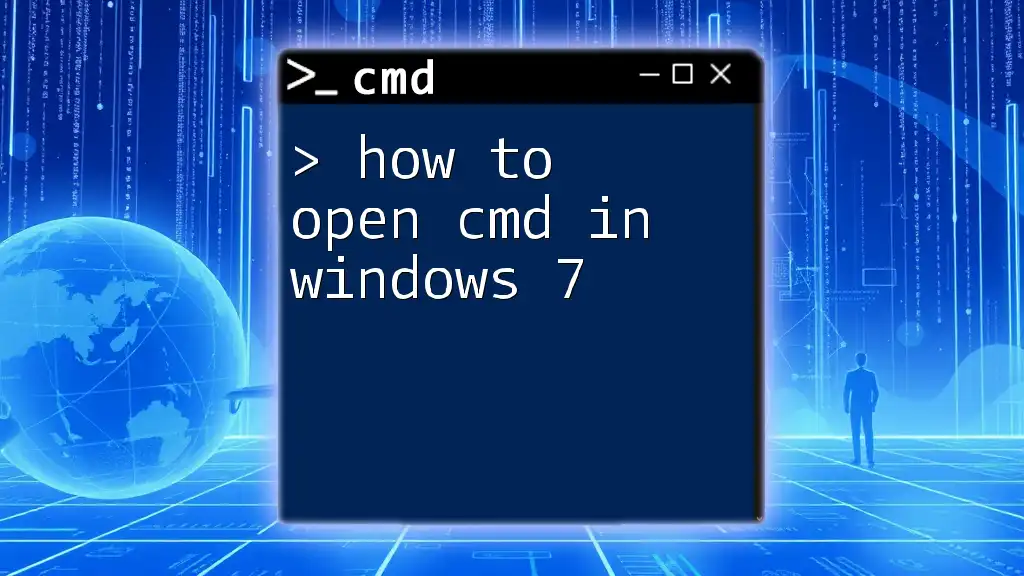
Call to Action
Explore more CMD commands and deepen your skills with the tools and techniques we offer. Feel free to leave comments or ask questions to discover more about command-line capabilities.
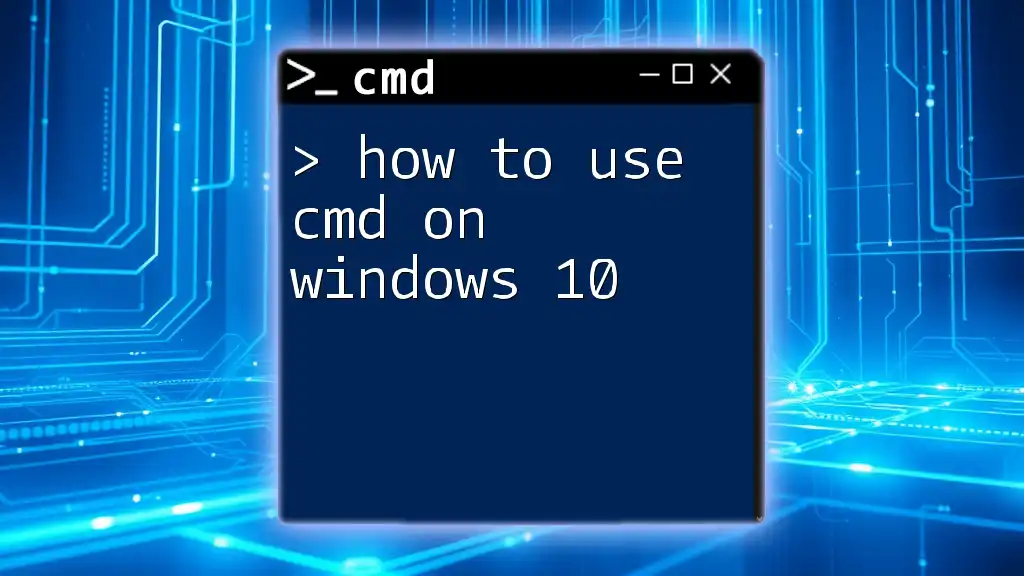
FAQs Section
What if my computer isn't part of a domain?
If your computer isn't part of a domain, the commands above will typically return the name of your computer. Domain names are only applicable in network environments where computers are grouped under a single administrative framework.
Can I change my domain name?
Changing a domain name usually requires administrative rights on the network. You’ll typically need to use system tools or network configurations managed by IT personnel within your organization.
Does using CMD affect my system in any way?
Generally, using CMD commands such as those discussed will not negatively impact your system if executed correctly. However, using inappropriate commands or scripts can lead to unexpected changes or behavior, so always ensure you know what a command does before executing it.








